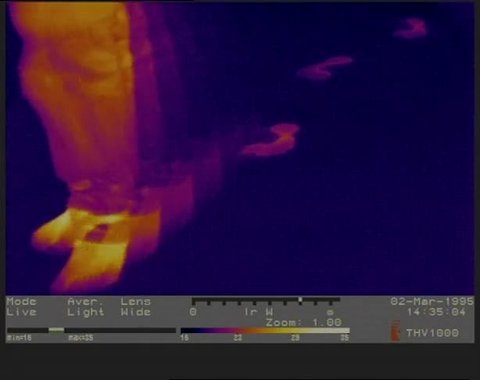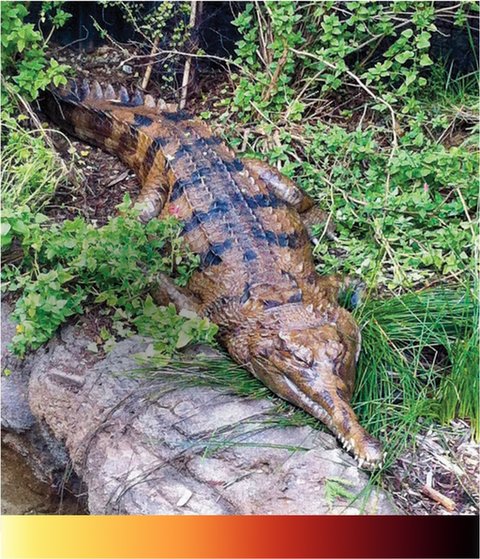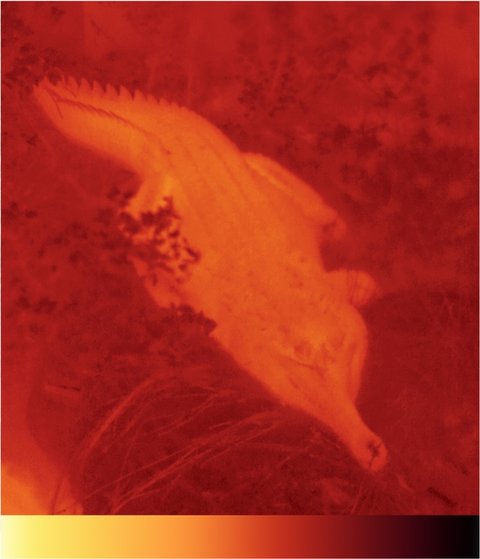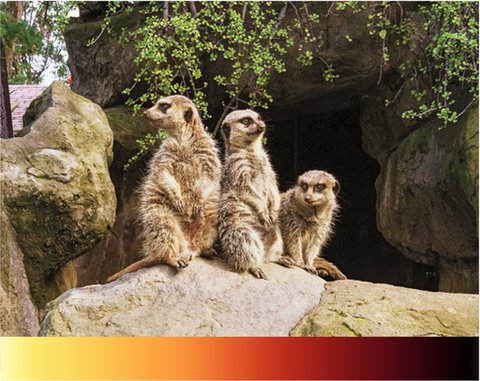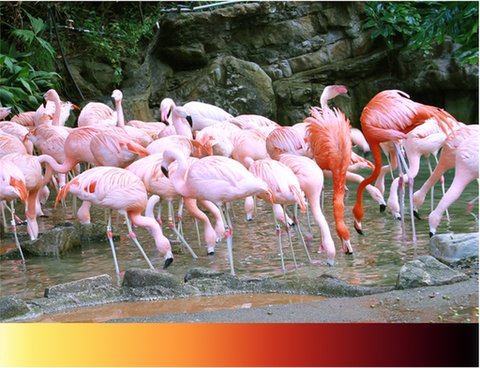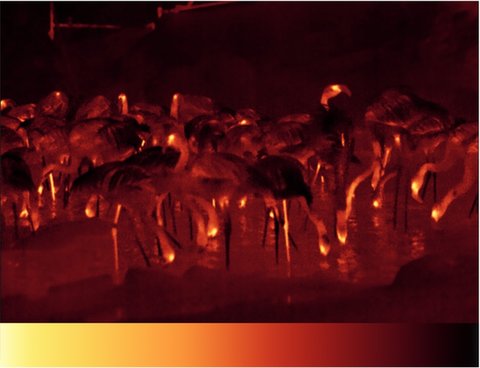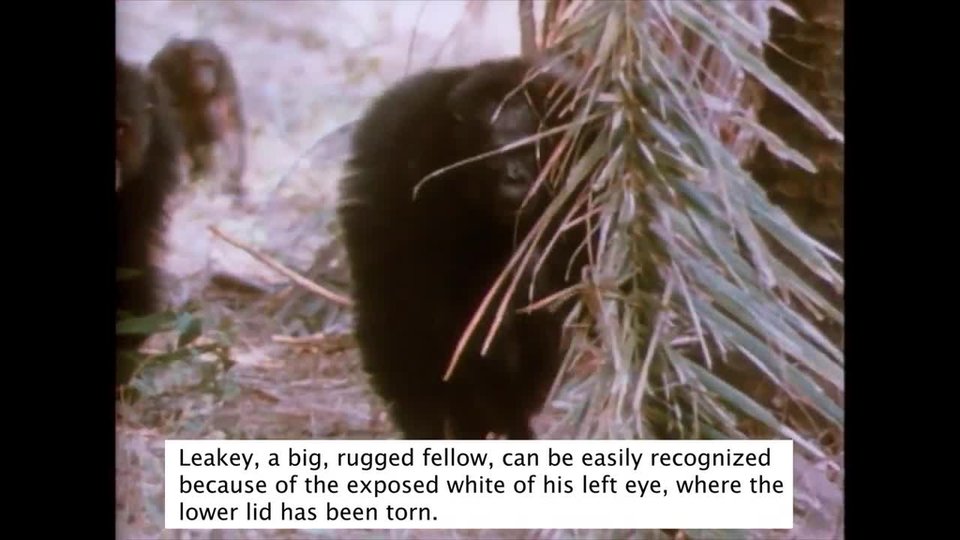SeetheDifference
Haveyoueverheldalizard,asnake,oraturtle?Itsbodytemperatureislikelylowerthanyours.Youcouldn’ttellthatjustbylooking.Youprobablywouldn’tbeabletofeeladifference,either.Butyoucanseethedifferenceinthermalinfraredimages.Theyshowhowcoolorwarmanobjectisbymeasuringtheamountofheatitgives off.

hand
lizard
HOTTER
COLDER

Byfanningitsears,thiselephantbeginstocool down.
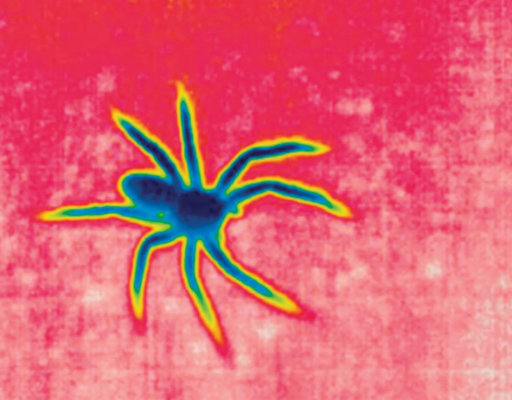
Thisspider’sbodyiscoolerthanits environment.
Lookatthethermalimagebelowofsomeoneholdingalizard.Thebrightredoftheperson’shandshowsawarm,steadybodytemperature.Thisistrueeventhoughthesurroundingairis cooler.
Thelizardshowsupmostlyasshadesofblue.Beforebeingheld,itappearedasdarkblue,likethebackground.Nosurprisethere!Thelizard’sbodytemperaturewasthesameasthetemperatureofthesurrounding air.
Butwhathappensasthereptileandmammaltouch?Thereptileabsorbsheatfromtheperson’shand.Itsbodyiswarming.Itsfeetandlegsshowupasgreenandyellow.Whatwillhappenifthepersoncontinuestohold it?
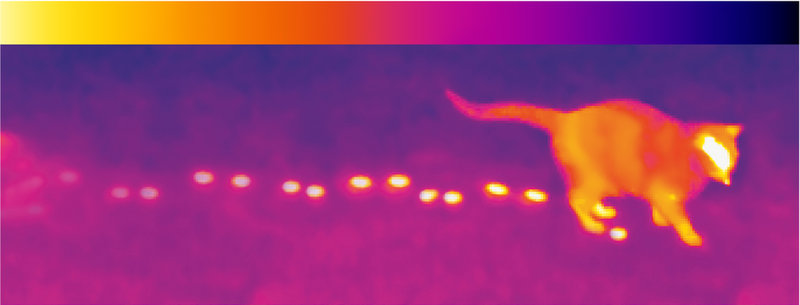
HOTTER
COLDER
Thiscatgeneratesitsownbodyheat.
Itleavesbehindatrailofwarm pawprints.
Watchasapersonleaves
warmfootprintsona cold floor.
Thisgharialsoaksupthesun’srays.Thenitsbodytemperature rises.
Chemicalreactionsfromfoodalsoprovideenergy.Andenergyproducesheat.Inthisway,ananimal’sbodyislikeafurnace.Butinsteadofburningnaturalgas,thebody“burns” food.
Thefasterananimal’smetabolism,themoreenergytheanimalhasforkeepingwarm.Whichanimalsdoyouthinkhavethefaster metabolism?
ALivingFurnace
Whycansomeanimalskeepthesameinternaltemperaturewhileotherscannot?Theansweris metabolism.
Ananimal’smetabolismisallofthechemicalreactionsthattakeplaceinitsbody.Tiny moleculesareconstantlycombiningandbreakingapartinbodycells.Theyformnewsubstances.Mostofthesechemicalreactionsoccurasfoodbreaks down.
Foodprovidesthematerialstogrow.Italsorepairsdamagedcells.Ifyoucutyourfinger,newcellsgrowoutfromeithersideofthecutandhealit.Thenewcellscomefromthefoodyou eat.
Thesemeerkatsdon’tneedtowaitforthesun.Theycontroltheirownbodyheatandarealready warm.
Someoftheseflamingoshaveonelegthatishotterthantheother. Whenaflamingostandsononeleg,thatleglosesheat,whiletheotherlegistuckedupnexttoitsbodykeeping warm.
Youguessedit—endotherms.The metabolism ofbirdsandmammalsisfastenoughtoproduceconstantwarmth.Thisallowstheanimalstomaintainahighbodytemperature.Birdshavethefastestmetabolismandthehighestbodytemperature, 40oCto 42oC (104oFto 108oF).
Canyouthinkofareasonbirdsneedsuchafastmetabolism?Thinkabouthowbirdsmove.Thehighrateofmetabolismproducestheenergybirdsneedto fly.
